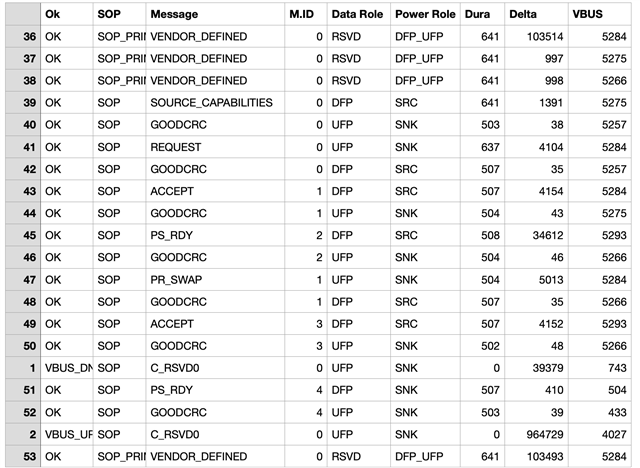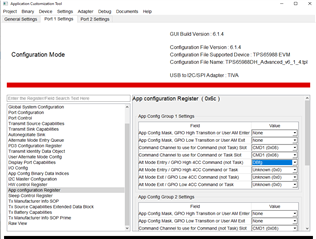Other Parts Discussed in Thread: TPS65987D
Tool/software:
TPS65988 PS_Swap problem
Summary
In this design we connect a USB-C charger to the 65988 Port2 USB-C port and an iPad to the Port1 USB-C. It is our goal that the iPad charges while plugged into Port1. This requires that Port1 on the 65988 be a UFP with its power role set to SOURCE. In the failing case, the iPad connects but the 65988 never properly switches to SOURCE mode.
Details
The charger is plugged into port 2. Port1 is configured for as a UFP and the configuration lists “prefer SOURCE” and the bits for Initiate and Process PS_Swap. The PS_Swap process starts Ok, but fails to complete and the system cycles continuously with VBUS turning on and off. Consider this PD trace:
The iPad connects at the top and with its SOURCE_CAPABILITIES message 39 as DFP and SOURCE. Later the 65988 issues the PS_SWAP at message 47 (as UFP SNK). The iPad accepts in 49 and in 51 and it issues a PS_RDY indicating the the iPad has changed to SNK. However, the problem seems to be that the 65988 never issues its PS_RDP indicating that it has switched to SRC. The cycle continues and this pattern repeats over and over.
Configuration of 65988
A Windbond W25Q80DV serial flash chip provides configuration to the 65988
Port 1 (for the iPad) is set in the UI to UFP and the power role “prefers SOURCE”
Port 1 Control register bits “Initiate” and “Process” Swap to Source are both set
PP_EXT1 (PP3) is configured as an output and the 65988 turns this on (to supply VBUS to Port 1) during the above PD exchange
A Fixed Tx Source PDO for 5V @ 3A is setup for Port 1Here is a system block diagram:



